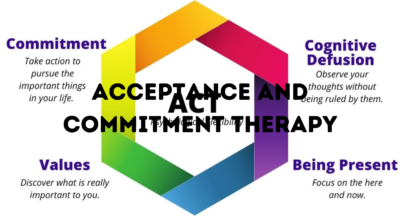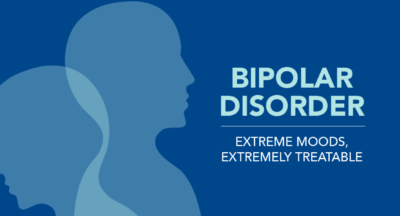
Understanding Anxiety Disorders: Causes, Symptoms, and Treatment Options
What is Anxiety?
Anxiety is a natural response to stress or danger. It is a feeling of fear or apprehension about what’s to come. While occasional anxiety is a normal part of life, for some people, it can become a chronic condition that significantly affects their daily lives.
Anxiety and Anxiety Disorders
Anxiety disorders are a group of mental health conditions characterized by excessive and persistent worry, fear, or unease. These disorders go beyond the normal feelings of nervousness or stress and can interfere with a person’s ability to function.
What are Anxiety Disorders?
Anxiety disorders are a category of mental health disorders that involve excessive and irrational fear or worry. They can manifest in various ways and have different triggers, but they all share the common feature of excessive anxiety that is difficult to control.
Types of Anxiety Disorders
There are several types of anxiety disorders, each with its own unique symptoms and triggers:
- Generalized Anxiety Disorder (GAD): characterized by excessive worry and anxiety about everyday events and situations.
- Panic Disorder: marked by recurring panic attacks, which are sudden and intense episodes of fear and physical discomfort.
- Social Anxiety Disorder: involves an intense fear of social situations and a constant worry about being judged or embarrassed.
- Specific Phobias: intense fear of specific objects, situations, or activities.
- Obsessive-Compulsive Disorder (OCD): characterized by intrusive thoughts (obsessions) and repetitive behaviors (compulsions).
- Post-Traumatic Stress Disorder (PTSD): develops after experiencing or witnessing a traumatic event and involves flashbacks, nightmares, and severe anxiety.
Causes of Anxiety Disorders
Anxiety disorders can have multiple causes, including:
- Genetic predisposition
- Brain chemistry and imbalances in neurotransmitters
- Environmental factors, such as trauma or chronic stress
- Personality factors, such as being prone to negative thinking or having low self-esteem
Risk Factors for Anxiety Disorders
While anxiety disorders can affect anyone, certain factors may increase the risk of developing these disorders:
- Family history of anxiety disorders or other mental health conditions
- History of physical or sexual abuse
- Chronic medical conditions, such as heart disease or diabetes
- Substance abuse
- Stressful life events, such as the loss of a loved one or financial difficulties
Symptoms of Anxiety Disorders
The symptoms of anxiety disorders can vary depending on the specific disorder, but common symptoms include:
- Excessive worry or fear
- Feeling restless or on edge
- Irritability
- Trouble concentrating
- Sleep disturbances
- Physical symptoms like rapid heartbeat, sweating, or trembling
Diagnosis of Anxiety Disorders
Diagnosing anxiety disorders involves a thorough evaluation by a mental health professional. The diagnosis is based on the individual’s symptoms, medical history, and a psychological assessment. It is essential to rule out any underlying medical conditions that may be causing or contributing to the anxiety symptoms.
Treatment Options for Anxiety Disorders
Anxiety disorders can be effectively treated, and there are various treatment options available:
- Therapy: Cognitive-behavioral therapy (CBT) is often the first-line treatment for anxiety disorders. It helps individuals identify and change negative thought patterns and behaviors that contribute to anxiety.
- Medication: Antidepressants, anti-anxiety medications, and beta-blockers may be prescribed to help manage anxiety symptoms. These medications are typically used in conjunction with therapy.
- Lifestyle changes: Engaging in regular exercise, practicing relaxation techniques, maintaining a healthy diet, and getting enough sleep can all help reduce anxiety.
- Self-help strategies: Learning stress management techniques, practicing mindfulness or meditation, and seeking support from loved ones or support groups can also be beneficial.
Self-Treatment for Anxiety Disorders
While self-treatment can be helpful for managing anxiety, it is essential to consult with a healthcare professional for an accurate diagnosis and to develop an appropriate treatment plan. Self-treatment strategies may include:
- Deep breathing exercises
- Progressive muscle relaxation
- Mindfulness or meditation
- Journaling or expressive writing
- Engaging in hobbies or activities that bring joy
- Limiting caffeine and alcohol consumption
- Getting regular exercise
- Establishing a consistent sleep routine
Remember, self-treatment should complement professional care and should not replace it. If you suspect you have an anxiety disorder, reach out to a mental health professional for guidance and support.
Anxiety disorders are common but treatable. With the right support and treatment, individuals can learn to manage their anxiety and lead fulfilling lives.
Related Posts
Understanding Acceptance and Commitment Therapy: A Comprehensive Guide
Introduction Acceptance and Commitment Therapy (ACT) is a form of psychotherapy...
Understanding Anxiety Disorders According to DSM-5-TR
What is the Diagnostic and Statistical Manual of Mental Disorders-5-TR? The...
Understanding Bipolar Disorders and the DSM-5-TR
What is the Diagnostic and Statistical Manual of Mental Disorders-5-TR...
Understanding Cognitive Behavioral Therapy (CBT) and Its Key Concepts
Cognitive Behavioral Therapy (CBT) is a widely recognized and evidence-based form...





